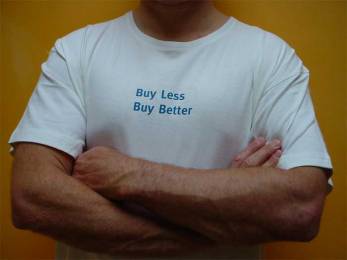
The home, household goods & services
When dumb stuff gets smart
It looks increasingly likely that in the relatively near future (10-20 years) ordinary objects will be given a life of their own through embedded intelligence. If inanimate objects are then connected (as they almost certainly will be) to the Internet, things start to get interesting. For example, milk bottles (the example is always milk bottles for some reason) could talk to your fridge and email you when you run out of milk. It could also mean your fridge placing an order and arranging delivery. Or it might mean your clothes will tell you when they need to be cleaned or your car will book itself in for a service. It could also herald the creation of 'personalities' for machines based on the interaction with their owners. To some extent what we are talking about here is RFID and GPS but this is just the beginning. There are six billion people on the planet and about fifty billion machines. We're already seeing the consequences of allowing people to easily connect via the Internet, so the consequences of machine-to-machine (M2M) communication are mindblowing. Such intelligence will also give objects predictive powers because they will have access to history and real time information - which in turn may create privacy issues for both humans and machines.
Ref: Various including Seimens magazine (Germany), Spring 2005, 'Pictures of the Future'. Also see 'When things start to think' by Neil Gershenfeld
The home of the future: technology versus human nature
The inside of houses, and in particular what we dream they will look like in the future, seems to be polarising. In one corner we have the tech house: A super-connected home where everything is automated, there are screens everywhere and everything looks like it's been built by NASA. No need to run your own bath, close a window or order groceries. In the other corner, we have the sanctuary: A tranquil Zen-like space where technology is the exception, not the rule. In places like Silicon Valley the big money is betting on the former. History and human nature would suggest the latter. We've been here before too. Look back 20, 50 or even 100 years and you can find examples of 'the home of the future'. But, like with converged devices, the pure theory rarely becomes the practical reality. One reason is that ordinary people like their homes to be kept simple and cosy. This means not looking like the office. Electronic picture frames (wirelessly connected to a central computer) are all very well but most people don't like the idea. It's not very warm and what happens if it breaks down? This is one reason why most people still read magazines and books on paper, not on computer screens. Apart from reliability issues, complexity also equals cost and no home owner is willing to risk investing in a technology hub if that technology turns out not to be the universal standard. In other words, ignore what you hear from the likes of Microsoft and Intel (for the time being anyway) and bet on the uncomplicated desires of human nature instead.
Ref: The Economist (UK), 3 September 2005, 'The home of the future'.
See also The Economist, 3 September 2005, 'Special report - the digital home'. www.economist.com
Green houses
What can we expect to see in an average home 20 or 50 years hence? To answer the question one should perhaps first conduct a small thought experiment by answering another question: what's in your home today that didn't exist 20 or 50 years ago? The pace of change is extraordinary, but it's worth remembering that, outside of communications and electronics, much remains the same. Looking ahead, one of the biggest changes will be how we consume energy. Roofs with solar panels and tiny wind generators will be commonplace. We might also see house paint that generates hydrogen when exposed to light - which is then captured and turned into an energy source (that is, photo bioreactors). Indeed, it may be possible for homes to heat and cool themselves for free and even sell unused energy back to a central grid. Houses will also capture their own water - which again may be sold to the grid - and will feature various security devices ranging from bio-sensors to monitor air and water quality to intruder alarms that will detect the smell of unknown visitors.
Ref: Time (US), 31 October 2005, 'How green can we go?' D. Fonda, J. Szczesny. www.time.com
Damage control for hair
In Japan the hair dryer market is flat overall, but there has been a tremendous increase in sales of so-called negative-ion hairdryers. The latest twist on this concept is a product from the Matsushita Electric Industrial Company called the nano-ion dryer. Traditional hair dryers often damage hair by making it too dry. In contrast the nano-ion dryer uses a reservoir of water that is electrically charged to deliver electrified molecules of weak acidity called nano-ions. Ions (18 nm in size) then find their way below the surface of individual hairs and add moisture, which in turns repairs damage.The result is shiny hair. Alternatively, don't dry your hair with a hair dryer!
Ref: Nikkei Weekly (Japan), 10 October 2005, 'Nanotech puts zip into hair dryers'. www.nni.nikkei.co.jp
